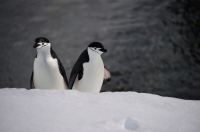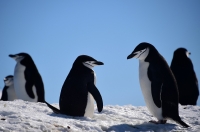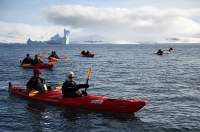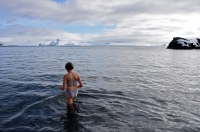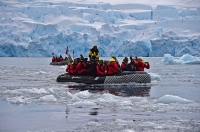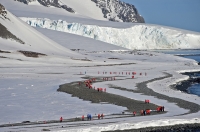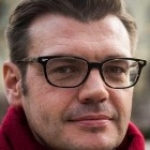Travels in Antarctica
Half Moon Island, Antarctica -- It was a reporting mission that they’ll remember for the rest of their lives. A trip aboard a luxury cruise to one of the Earth’s most desolate places, Antarctica. A place of stunning beauty and contrasts that can move you to tears. Photographer Johan Ordonez, video journalist Viken Kantarci et text reporter Pierre-Henry Deshayes share their tale.
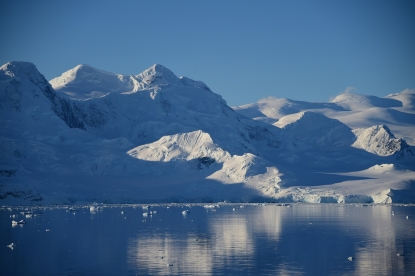 (AFP / Johan Ordonez)
(AFP / Johan Ordonez)Johan’s penguins
The first thing I thought of when I learned I’d be going on a reporting trip to Antarctica was clothes. I live in tropical Guatemala -- warm parkas, boots and mitts are not part of my wardrobe.
Reticence about proper gear aside, I couldn’t wait for the trip to start. “It’ll be something you’ll remember all your life,” my Chile-based colleague Martin Bernetti told me.
The team was to meet in Santiago and then travel together to the town of Valparaiso to board a luxury cruise ship that was to take several days to sail to Antarctica with 400 tourists aboard.
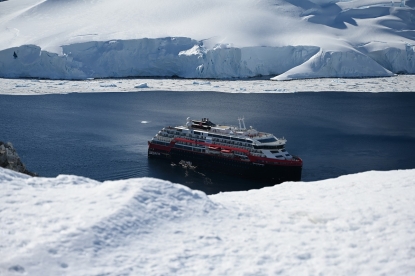 (AFP / Johan Ordonez)
(AFP / Johan Ordonez)As my text colleague wrote in one of his stories, Antarctica remains the last frontier for many people. A frontier that one must see before it disappears in its actual form because of climate change.
I remember when we reached the icebergs. First there was one. Then another. Then a third. I couldn’t stop staring at them. They were so huge… that we just laughed. You get the scale from one of the photos that we ran -- the cruise ship looks so tiny compared with the immense iceberg.
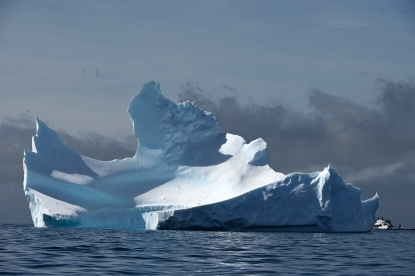 Half Moon Island, Antarctica (AFP / Johan Ordonez)
Half Moon Island, Antarctica (AFP / Johan Ordonez)When you see it, you really get a sense of just how small we humans are in the grandeur of nature.
I think that my sentiments on this reporting trip come through in the photographs. You see what I lived. For example, when I was watching the sunset in Chiriguano Bay I had a feeling of peace and energy. I hope it comes through in the photos.
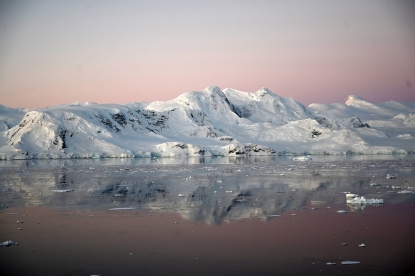 (AFP / Johan Ordonez)
(AFP / Johan Ordonez)I also really like photographing the penguins. They are so funny and so curious. My favorite photo is of the four penguins. It’s now my background photo on my phone. It made me think of my family. There was one penguin to the side and another was helping him walk along.
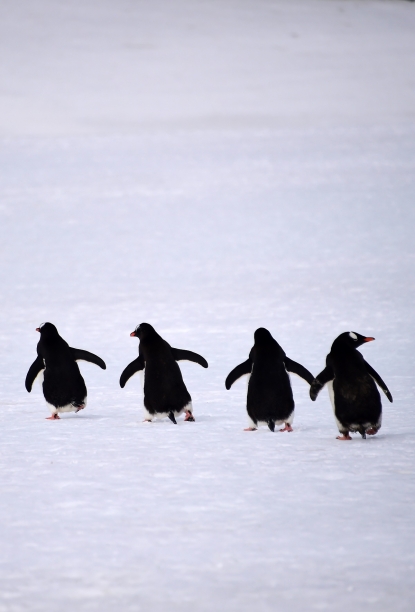 (AFP / Johan Ordonez)
(AFP / Johan Ordonez)Even though I loved it, I also felt a bit guilty of invading a space that up until now was solely the domain of animals. I imagine that our presence bothers them.
And that presence is not going to end anytime soon. Tourism to the region is due to increase by 40 percent this year.
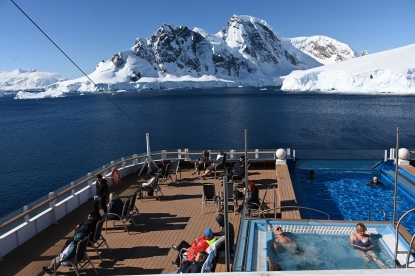 (AFP / Johan Ordonez)
(AFP / Johan Ordonez)I think most people are like me and they don’t know what Antarctica means to humanity. For example, that it contains nearly 80 percent of our planet’s freshwater reserves. So on the one hand, this type of tourism is good to educate people about Antarctica’s importance. But on the other hand, the tourists leave an impact on a place already severely affected by climate change.
For me, my images are my way of telling the world that we have to take care of this place...
 View of a glacier at Chiriguano Bay in South Shetland Islands, Antarctica on November 07, 2019. (AFP / Johan Ordonez)
View of a glacier at Chiriguano Bay in South Shetland Islands, Antarctica on November 07, 2019. (AFP / Johan Ordonez)Viken’s sunset
We were invited to go on this trip by the cruise ship company. AFP paid our way to get to Chile and afterward, we were guests. Which raises all sorts of journalism issues. Normally you want to avoid having your trip paid for, because your objectivity can be put into doubt. On the other hand, AFP would not have been able to afford to pay our way, so this was the sole possibility of doing this story.
I think we managed to strike a good balance. We were aboard for two weeks, which gave us time to build a relationship with our hosts. And the passengers as well -- they had time to get used to us and really open up to us without feeling rushed or pressured. And they also had questions of ethics about going, so it actually worked out really well.
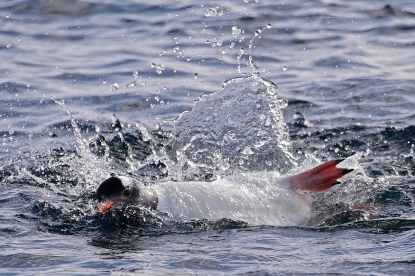 A Gentoo penguin (Pygoscelis Papua) swims on Half Moon island, Antarctica on November 09, 2019. (AFP / Johan Ordonez)
A Gentoo penguin (Pygoscelis Papua) swims on Half Moon island, Antarctica on November 09, 2019. (AFP / Johan Ordonez)What struck me the most was the contrast between the comfort of the cruise ship and the land we were visiting, one of the most inhospitable corners on Earth where just a hundred years ago explorers would eat their dogs to survive. Also the sheer lack of hospitability of the land -- Antarctica is beautiful but it is also a landscape of death, of extremes.
During the trip, each time that we thought we couldn’t see anything more beautiful, we were surprised to see something more breathtaking still.
I’ll always remember one sunset that we saw. It was really something. It was like it was too much for my camera settings and for my senses. It lasted over two hours and each minute was different from the one before. I think I witnessed the entire color spectrum unfold before my eyes, it was nature at its finest. The colors were so extreme that at times they seemed like they were artificial. The sunset was followed by a night where the moon was very bright. Ice was all around us and its light reflected on it in an otherworldly glow.
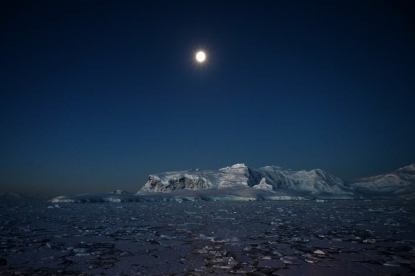 (AFP / Johan Ordonez)
(AFP / Johan Ordonez)Pierre-Henry’s sleepless nights
I’ve seen quite a lot of the Arctic as I’ve lived in Norway for the past 20 years. And I don’t like superlatives too much. But this trip was… unique, huge, monumental, stunning.
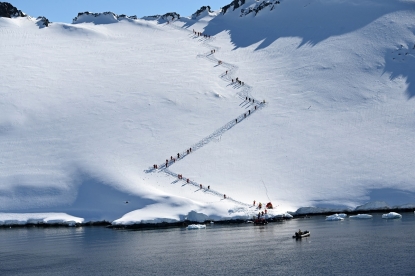 Tourists visit Orne Harbur in South Shetland Islands, Antarctica on November 08, 2019. (AFP / Johan Ordonez)
Tourists visit Orne Harbur in South Shetland Islands, Antarctica on November 08, 2019. (AFP / Johan Ordonez)During the Antarctica part of the cruise, which lasted four days, we didn’t want to sleep so as not to miss anything. I remember once getting up early and seeing a sunrise on a white continent. The sky was completely different there. You want to become one with the surroundings. There were moments when it was so beautiful that it made me cry.
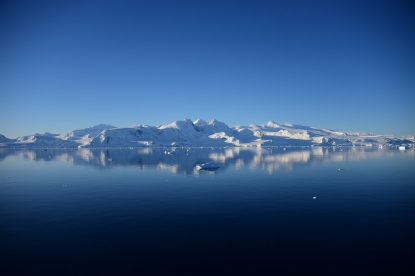 (AFP / Johan Ordonez)
(AFP / Johan Ordonez)But it was also a trip of reflection. Part of our mission was to question whether these cruises were doing more harm than good? Should we limit them so as not to ruin this region, one of the last ones not to have suffered too much from human activity?
At the same time, wasn’t it hypocritical of us to say so, since we were perfectly happy to be on this cruise? Was it fair to deny witnessing this beauty to others? Especially when coming here can heighten someone’s awareness of the need to preserve it?
To be honest, I still don’t know the answer to that question. Having come here, I now see that descriptions don’t do this place justice. To feel the things that I have felt, you have to witness it first-hand. Knowing that your presence may contribute to the degradation of this magic corner of the world.
This blog was written with Michaela Cancela-Kieffer in Paris; English version by Yana Dlugy in Paris.
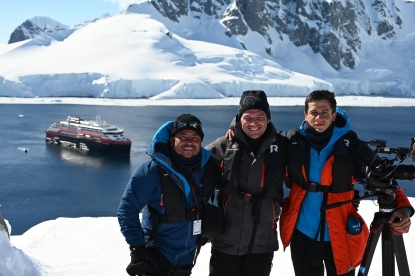 Photograph Johan Ordonez (left), text journalist Pierre-Henry Deshayes (center) and video journalist Viken Kantarci (right).
Photograph Johan Ordonez (left), text journalist Pierre-Henry Deshayes (center) and video journalist Viken Kantarci (right).


